Did you know that, from the coffee grounds used to make your regular cup of coffee, only 1% of the morning java in your mug is actually from the biomass of the coffee grounds used? The rest is tossed into the trash. Ambitious spirits may think to themselves, what if there were a better way to make coffee? While we agree that’s a great thought process to follow… what if, without actually changing anything about the coffee process, you could not only find a way to utilize the leftover 99% biomass but also get food out of it for yourself, those around you, and even your garden? As it turns out, coffee grounds are a great substrate for growing oyster mushrooms! Talk about having your cake coffee and eating it too.
All joking aside, this goal is exactly what we here at Mushroom Mountain are setting our eyes on, starting with our Coffee Cultivator Kits.
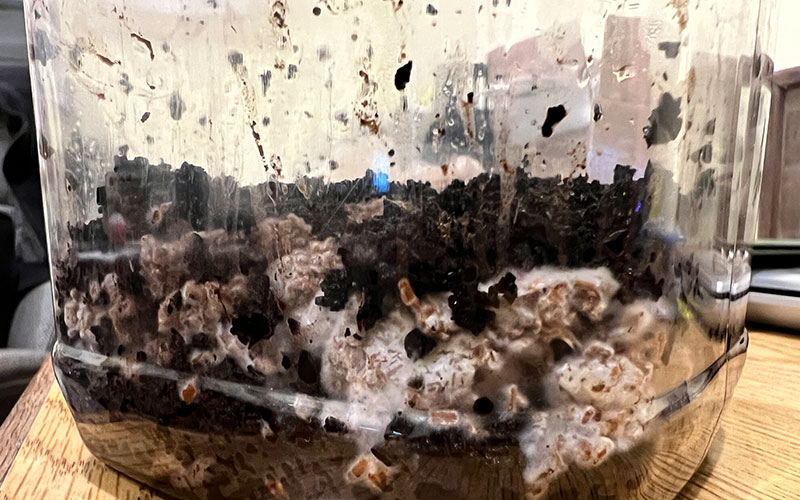
Before we start, though
Let’s talk about a few things first, starting with mushrooms as a whole. Like most things in life, the surface is just the tip of the iceberg; what we see on the surface of the soil is exactly the same situation. To clarify, mushrooms are just one step in a whole life cycle of an organism as complex as any flora or fauna and a mushroom is just the visible fruiting body of this life cycle, much in the same way that an apple is the fruiting body of an apple tree’s life cycle.
Mushrooms are just one step in a whole life cycle of an organism as complex as any flora or fauna!
In fact, most of this organism’s life cycle occurs underground through what are known as mycelium (plural: mycelia) and the organism as a whole shares more DNA with us than it does with anything else on earth- including plants! Insane, right?
Humans as a whole consume 2.25 BILLION cups of coffee DAILY!!!
The second part of the equation comes when we consider that coffee, second only to water as the most consumed drink in the world, is great for giving us some of that much needed energy but unfortunately is not so great for the environment. Humans as a whole consume 2.25 BILLION cups of coffee DAILY and the runoff from the caffeine left over in all those doses of Spent Coffee Grounds (SCGs) has measurably polluted each and every body of water on Earth. Many studies followed this revelation, and none of the conclusions were good news. According to a study from December 2023 which evaluated caffeine’s effects on invertebrates: ”Thus, caffeine is recognised as a ubiquitous contaminant in aquatic systems, and it is now considered a high-priority environmentally hazardous pharmaceutically active compound pollutant in aquatic ecosystems.” 1
So, if caffeine is such an omnipresent contaminant then why are we putting it in the ground?
The answer is SCIENCE! And mushrooms, of course.
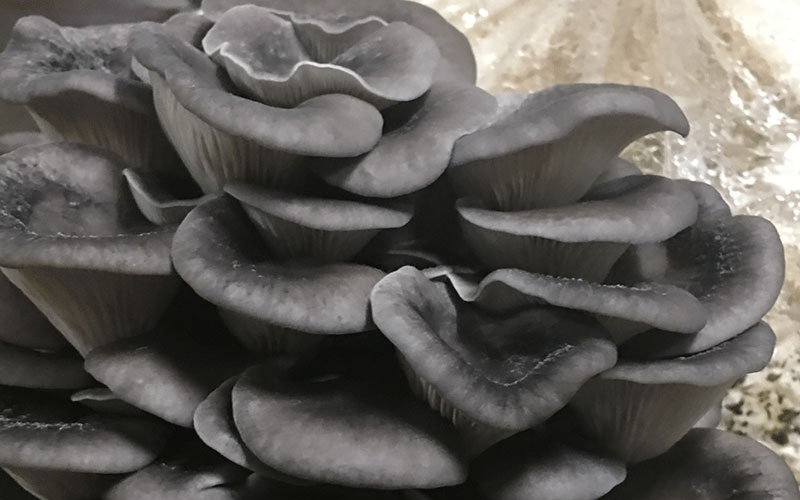
When SCGs are put directly into soil, the intent is for soil enrichment. Unfortunately, the result is hardly productive: “Although coffee grounds provide some nitrogen (1% to 2%) and micronutrients, they aren’t a major source of plant nutrition… As coffee grounds break down, nitrogen is tied up by soil microorganisms using it to grow and reproduce.” 2 Not all hope is lost, though! By using those same SCGs to grow mushrooms first, the mushrooms have been found to break down the caffeine present in the SCGs which not only rids them of caffeine but as a result makes the entire project or kit excellent to use in a garden, compost pile, or even to grow new mushrooms (in case you’re as crazy about them as we are)!
How to grow mushrooms on coffee grounds
The easiest way for you to go about this is to start collecting fresh (damp but not wet) spent coffee grounds daily and store them in the freezer while you wait for your Coffee Grounds Mushroom Cultivator Kit to arrive. We don’t recommend using espresso grounds since the grind of the material is too small and doesn’t allow the mycelium to access the necessary oxygen. The only other things you’ll need are a clean 2.5 gallon container with a lid (glass and plastic are OK to use) and a fine mist sprayer bottle full of room temperature water.
When the kit arrives, make sure to put it in the fridge until you’re ready.
In your empty container, add a one inch thick layer of thawed SCGs, then a thin layer of the mushroom starter included in the kit, then another one inch thick layer of thawed SCGs. Repeat this until you have about an inch of space between the final layer of SCGs and the top lid.
Then, follow the directions included in the kit and you will have an abundance of Blue Oyster (P. ostreatus) mushrooms in no time!
For printable instructions, please click here.

If you don’t like eating them, that’s okay too– you can still use the kit and once the SCGs are colonized just introduce it into your garden soil to encourage symbiosis and enhance your soil content, caffeine-free.
Once your mushrooms are ready, try out this quick and simple recipe recommended by our staff!
Savory Oyster Mushroom Skewers
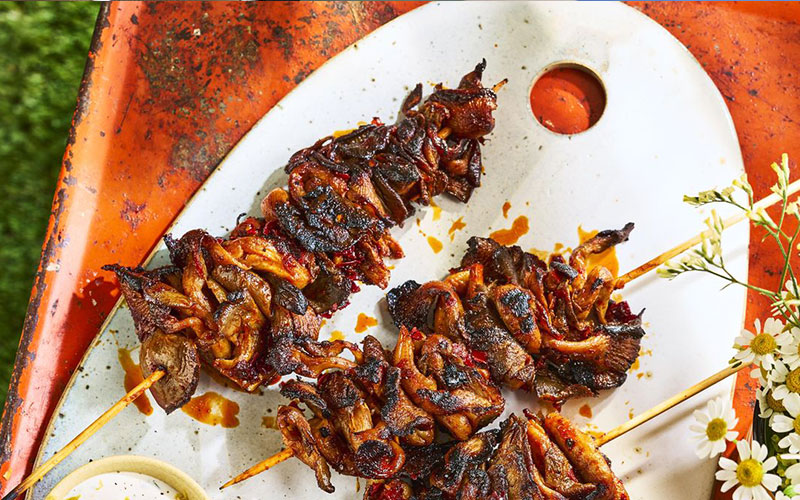
Ingredients & Supplies:
- 12 Oz (340g) Oyster mushrooms
- 1 Tbsp (14 mL) Olive oil
- ¼ Cup (60 mL) Balsamic vinegar
- 2 cloves Garlic
- 1 ½ Tbsp (22 mL) Maple syrup
- 1 Tbsp (14 mL) Chili oil (optional)
- Bowl for marinating
- Skewers (metal, wood, or bamboo)
Instructions:
- Use a damp cloth to remove any debris. Starting from the edge of the mushroom, tear into wide strips towards the stem. (Oyster mushrooms will naturally tear along their gills)
- Add the olive oil, balsamic vinegar, garlic, maple syrup, and chili oil (if using) to a bowl and stir to combine. Add the mushrooms and toss to combine, marinating for no more than 10 minutes.
- Thread the mushrooms onto the skewers and cook according to preferred method:
-
- Grill for about 7 minutes on each side
- Oven roast at 425°F for about 15 minutes, flipping halfway through
- Air fry at 425°F for about 15 minutes, flipping halfway through
Tips:
- Serve over grains or with a dipping sauce, if desired.
- If using wooden or bamboo skewers, remember to soak them in water for at least 15 minutes beforehand. If not, the mushrooms might stick to the skewers while cooking and during removal from the skewer.
- Do not marinate mushrooms for more than 10 minutes for they will absorb too much moisture and be a gooey mess.
Still want even MORE mushrooms?
Check out our extracts and tinctures that you can add right into your coffee! No unwanted taste or texture added to your drink but you still get all the benefits. Plus, who doesn’t love when things come full-circle?
Blog by: Ben Feria, MM Copywriter
References
1 Baracchini C, Messager L, Stocker P, Leignel V. The Impacts of the Multispecies Approach to Caffeine on Marine Invertebrates. Toxics. 2024; 12(1):29. https://doi.org/10.3390/toxics12010029
2 Pokorny K. Used appropriately, coffee grounds improve soil and kill slugs. OSU Extension Service. Published December 1, 2023. https://extension.oregonstate.edu/news/used-appropriately-coffee-grounds-improve-soil-kill-slugs

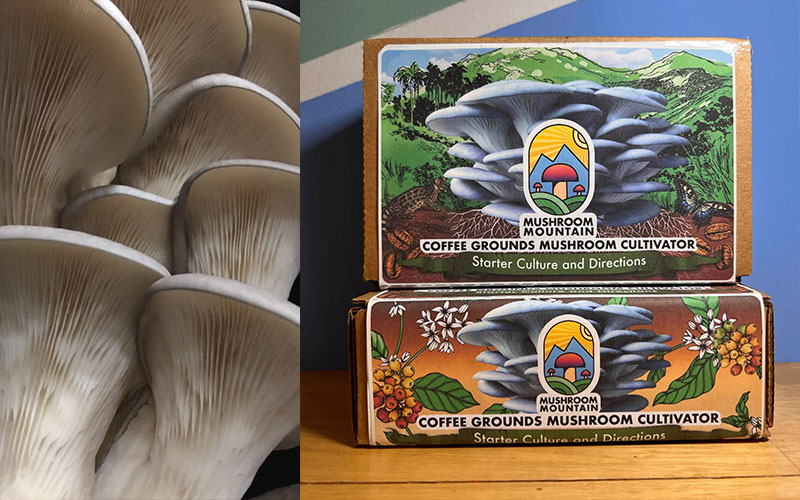
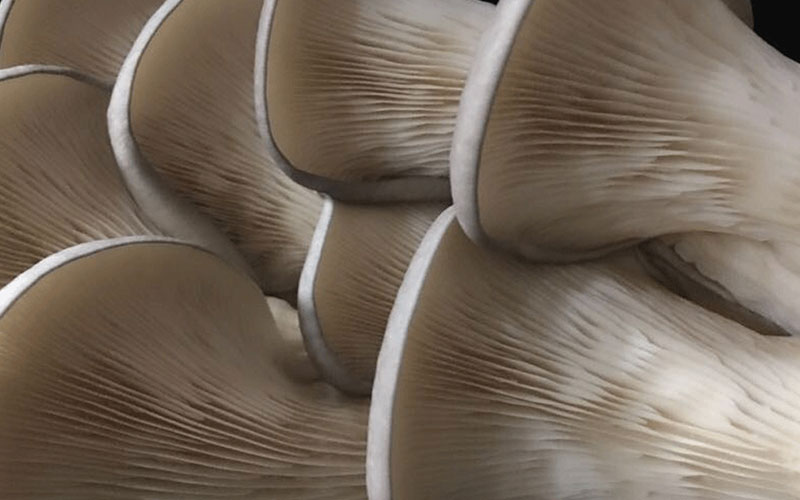
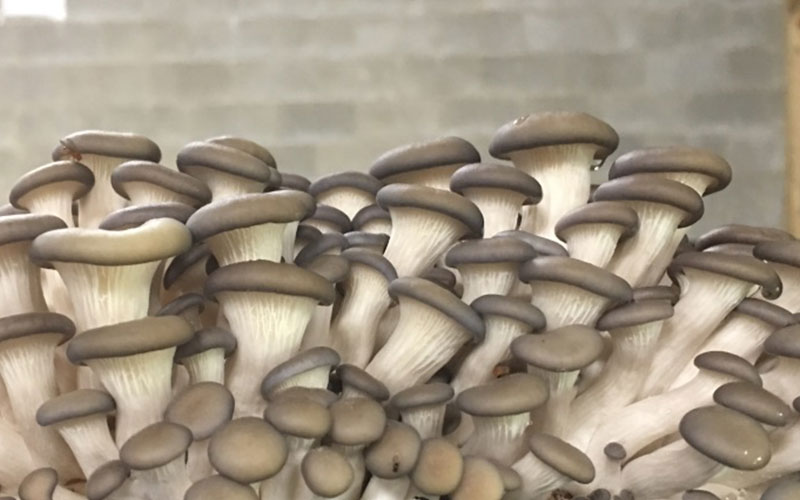
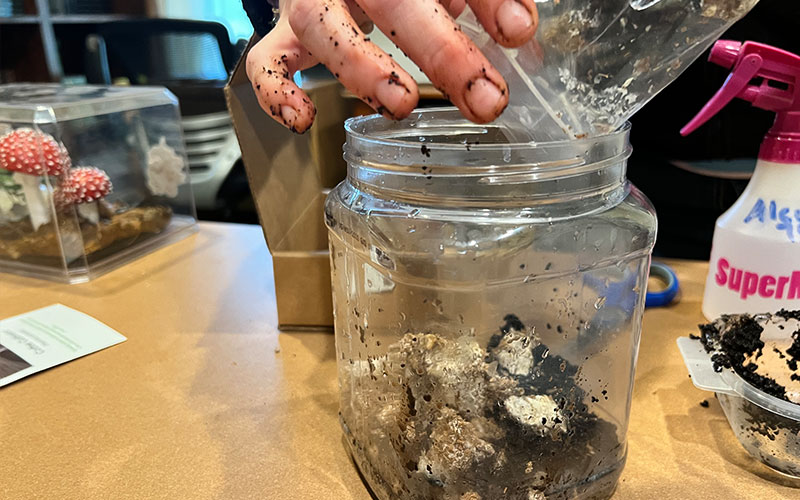
5 thoughts on “Cultivating Oyster Mushrooms With Mushroom Mountain’s Coffee Cultivator Kit”
Hello! I have moved to Anderson, SC. I have always been fascinated with mushrooms! I have found out about you tours/ workshops. I wanted to ask about what is the best time of year to see the most mushrooms? I’ve been in the plains where it is super arid all of my life. I want to sign up for a tour but would like to come when it’s not blistering hot outside. Thank you so much!
Best time is July through September, but we have mushrooms to show year round. Come see us. 🙂
I’ve got almost enough coffee grounds saved up from our pour overs, but would like to ask a couple questions before getting started. What temperature should we keep the container with mycelium and coffee when we’re waiting for the mushrooms to grow? Should we drill holes is a bucket for the mushrooms to grow out of like some other mushroom productions? How many flushes can you get out of one batch of coffee grounds and mycelium? Thanks for the help!
Hey Josh! Your grow should be at room temperature, they will do best then. You can drill holes if you want to, but if you are doing a small amount, then I would just let them fruit out of the top. Let points of entry for contamination this way. You can get 2 nice flushes, and then some smaller ones after that.